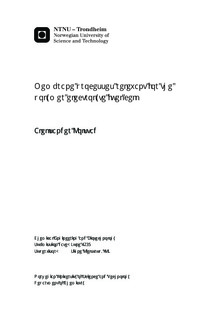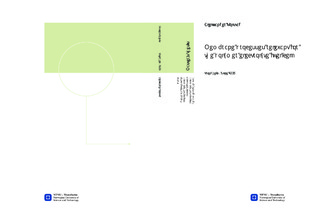| dc.contributor.advisor | Kjelstrup, Signe | nb_NO |
| dc.contributor.author | Kolstad, Aleksander | nb_NO |
| dc.date.accessioned | 2014-12-19T13:22:08Z | |
| dc.date.available | 2014-12-19T13:22:08Z | |
| dc.date.created | 2013-09-19 | nb_NO |
| dc.date.issued | 2013 | nb_NO |
| dc.identifier | 649671 | nb_NO |
| dc.identifier | ntnudaim:9484 | nb_NO |
| dc.identifier.uri | http://hdl.handle.net/11250/247914 | |
| dc.description.abstract | Research in the Proton Exchange Membrane Fuel Cell (PEMFC) is important toget an efficient fuel cell that can be used as an energy carrier, for example in thetransport sector. Understanding the different phenomena and variations in temperature,heat and other quantities is critical. Non-equilibrium thermodynamics is usedto establish a 1-dimensional model for transport processes in a Nafion membranesystem consisting of heat and mass transport, and for a PEM fuel cell with heat andtransport of mass and charge.The Nafion membrane in part 2 is coated with a Sigracet layer of either GDL10AAwithout Teflon or with GDL10BA with 5 % Teflon. Outside of these layers is liquidwater. The absorption enthalpy between liquid water and the Sigracet layer hasbeen found by combining experimental data with the established simulation model.For GDL10AA without Teflon this absorption enthalpy ranges from -460 J/mol to-3380 J/mol for mean temperatures of 30 oC and 75 oC respectively. For GDL10BAwith Teflon this absorption enthalpy ranges from 1150 J/mol to 7850 J/mol for meantemperatures of 30 oC and 75 oC respectively. The heat capacity value of water for Sigracet GDL10AA and GDL10BA was found to be 10 J/K mol and 223 J/Kmol respectively. The effect on the absorption enthalpy and the sign and value ofthe water flux by changing the temperature and material properties is studied. Thisstudy has found that the heat conductivities play a minor role when it comes totransport of water compared to the diffusion constant of the Nafion membrane andthe Sigracet layers.A simulation model is established for the PEM Fuel Cell in part 3. Only variationsin quantities along one dimension is considered. Non-equilibrium thermodynamics isused to properly describe heat and transport of mass and charge. The system has aNafion membrane coated with a Sigracet layer of GDL10AA without Teflon at bothends. Outside of these layers are water vapor with hydrogen at one side and oxygenat the other. Case studies such as the reversible limit is studied in detail to confirmthe accuracy and validity of the simulation model. Profiles of temperature, chemicalcomposition, water content, measurable heat flux, electrical potential and entropyproduction are found by use of the simulation model for various current densities.A polarization curve by plotting the cell potential for different current densities isfound. Additionally study and a sensitivity analysis for the PEM fuel cell are carriedout to fully understand transport processes and the effects from material properties. | nb_NO |
| dc.language | eng | nb_NO |
| dc.publisher | Institutt for kjemi | nb_NO |
| dc.title | Membrane processes relevant for the polymer electrolyte fuel cell | nb_NO |
| dc.type | Master thesis | nb_NO |
| dc.source.pagenumber | 176 | nb_NO |
| dc.contributor.department | Norges teknisk-naturvitenskapelige universitet, Fakultet for naturvitenskap og teknologi, Institutt for kjemi | nb_NO |

